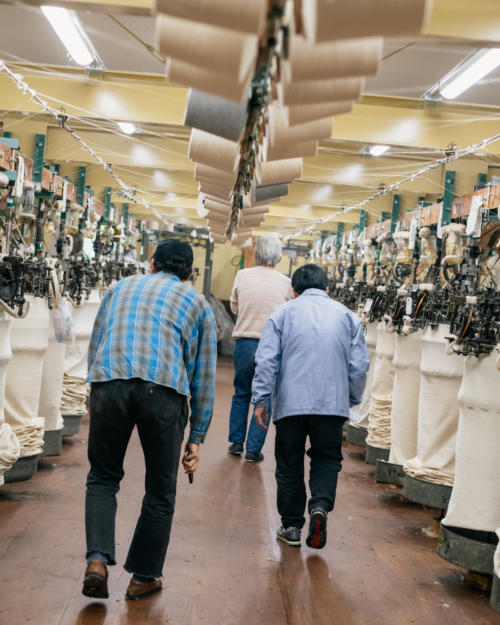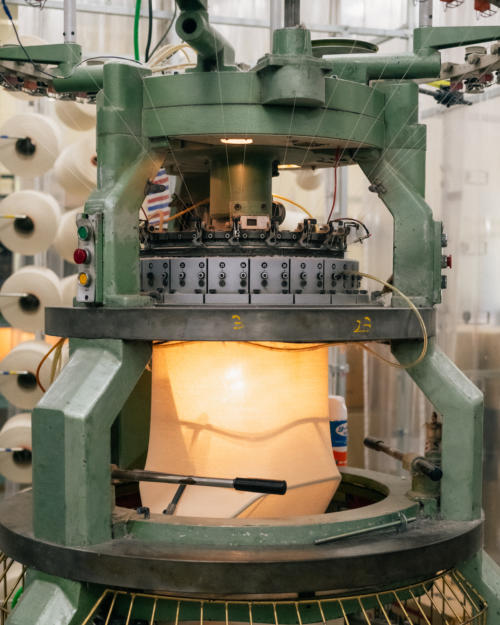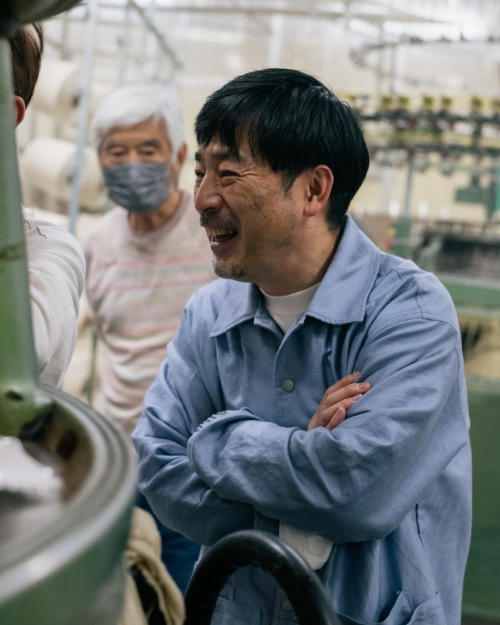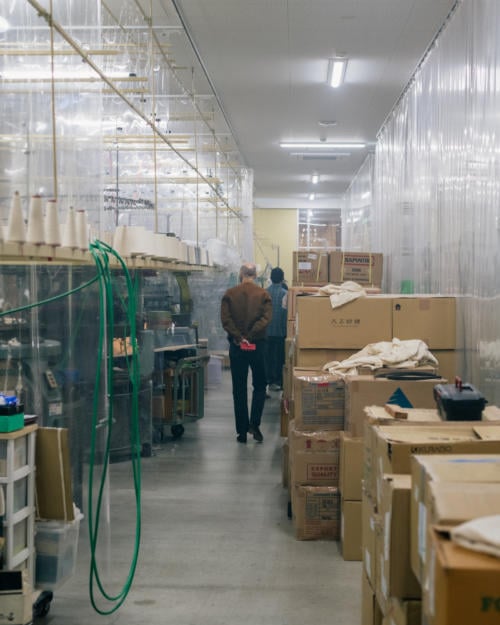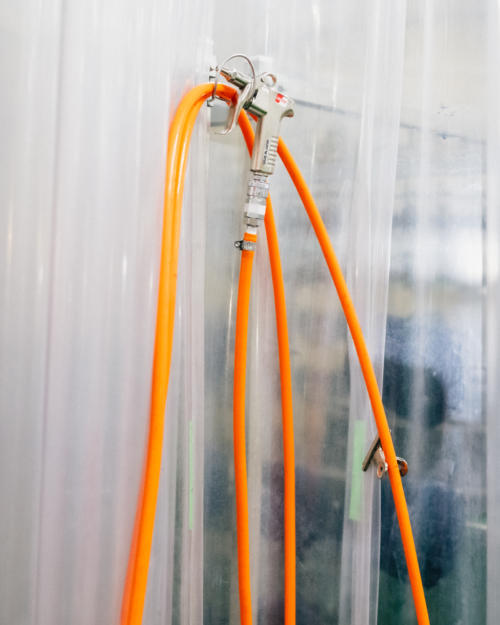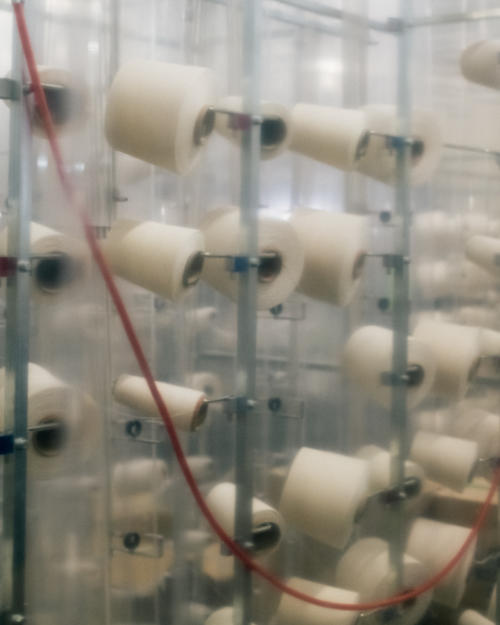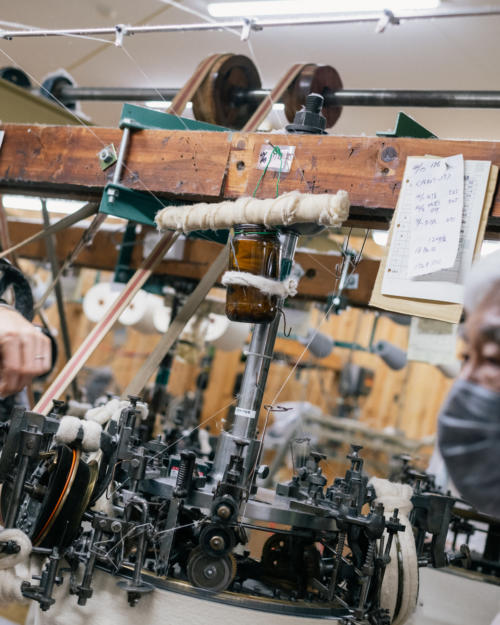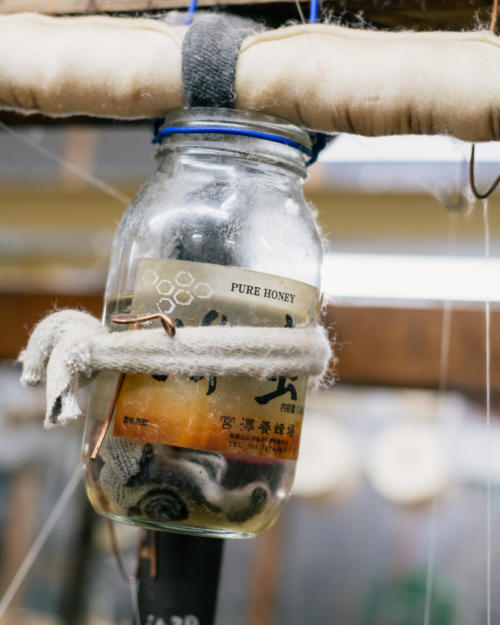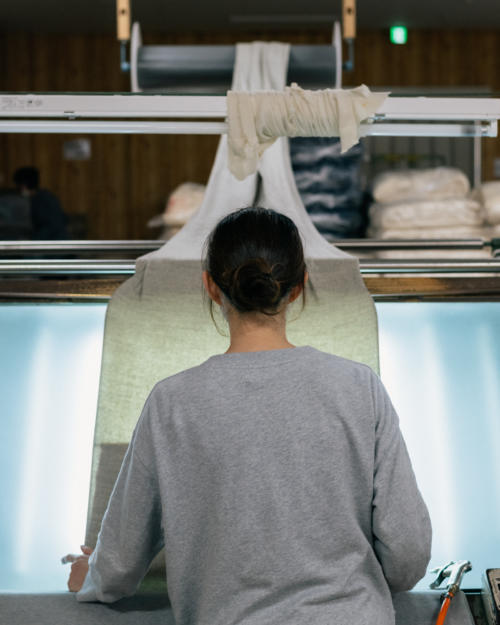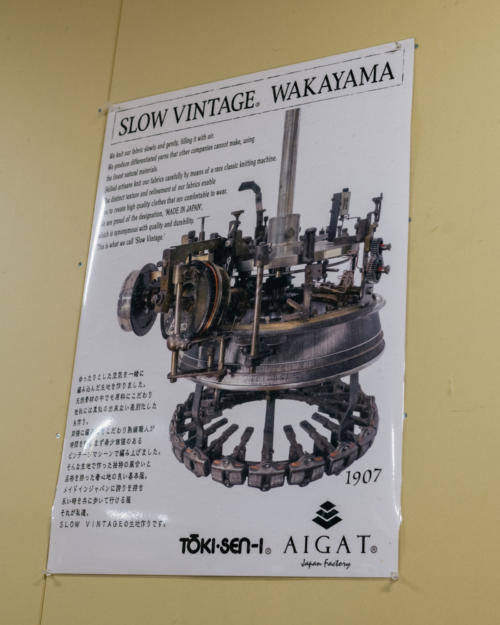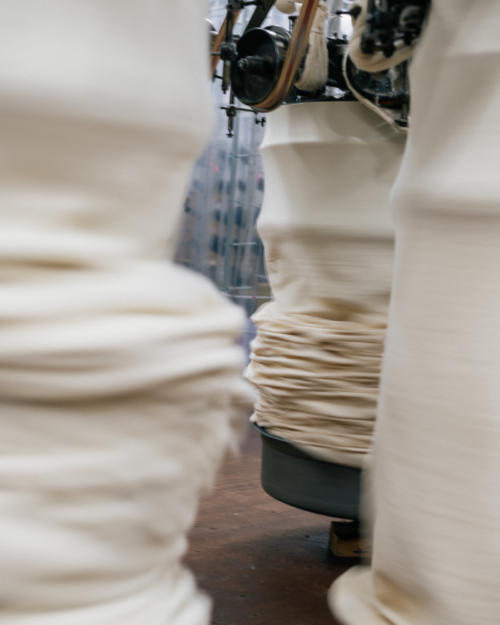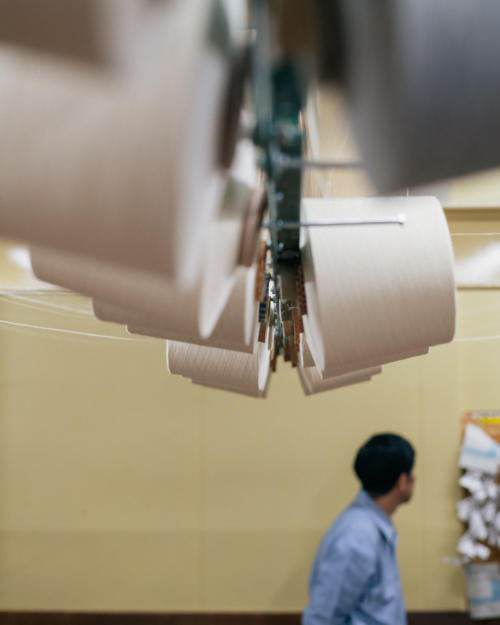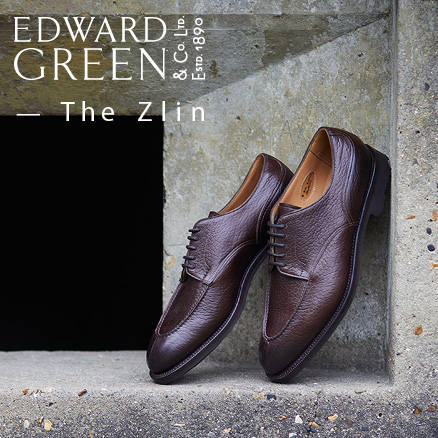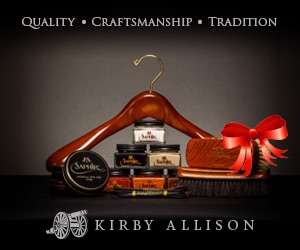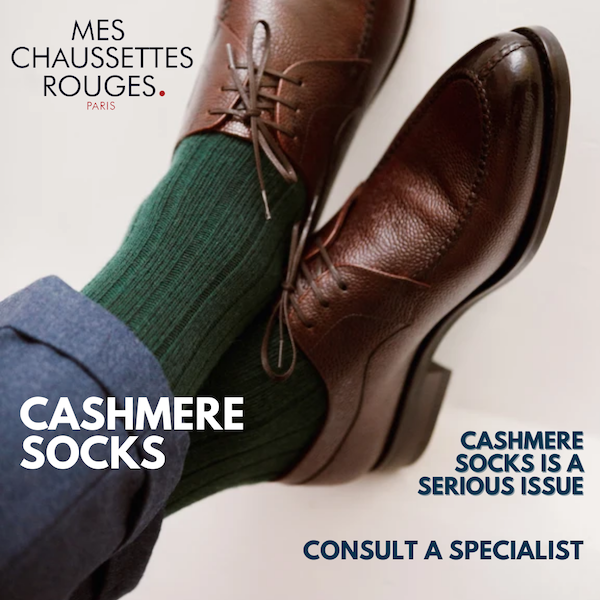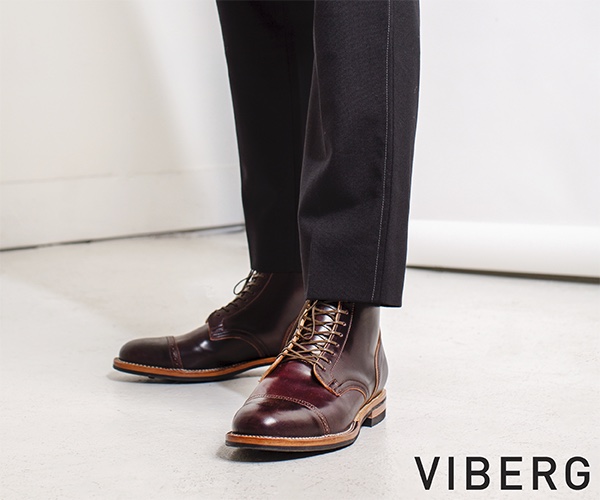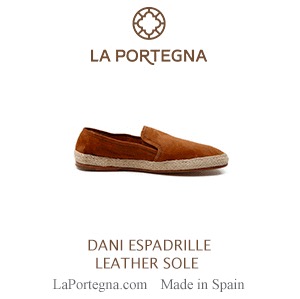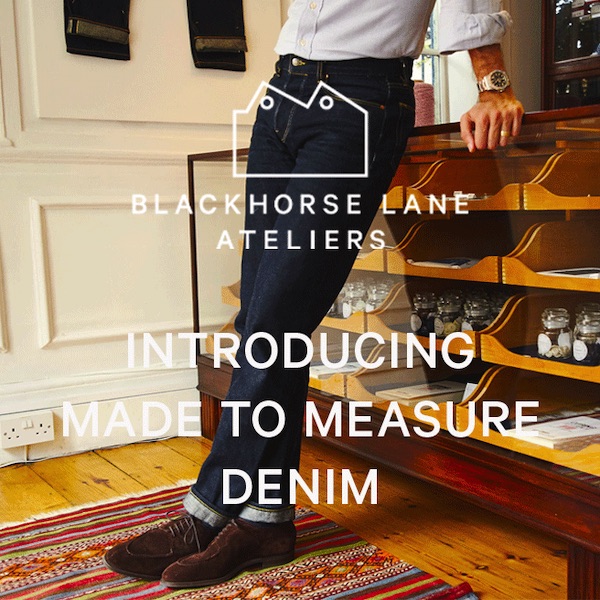How loopwheel sweatshirt fabric is made – at Aigat, Wakayama
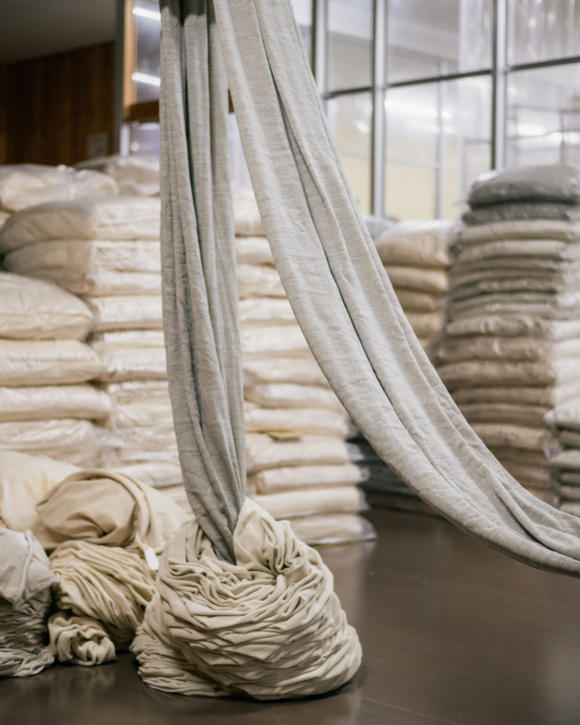
In the corner of the Aigat mill in Wakayama, there are a few knitting machines that look like none of the others - monsters, hybrids.
The rest of the mill is split in two, with the more modern ‘sinker’ machines (below) in one half, wooden-beamed loopwheels (above) in the other.
But in the corner, the owner is trying to fuse them together. “This first one is a loopwheel, but I’ve hooked it up to an electronic system to try and make it do jacquard knitting. It’s kind of, sort of working,” he says.
The second is a sinker, but it’s being run as slow as possible. “Slower than you’re meant to, just to see its limits,” he explains. The main reason loopwheel machines are so valued is that they knit slowly (one metre an hour) which makes the fabric air-filled and soft.
“It would be great if we could get a sinker to do almost the same, because the loopwheel machines are hardly being made any more - you have to salvage them, even just to get parts to keep these ones going.”
The problems are the same, it turns out, whether you’re making sweaters in Scotland, shoes in England or French terry in the hills of Japan. The demand for quality clothing is shrinking, and no one is making the machines that make the fabric that makes the clothes.
It was probably inevitable, given those dynamics. You travel halfway around the world, drive two hours into the forested hills, and find somewhere that feels rather like a British flannel mill.
The reception is the same, with its samples and swatches. The roar of the machines is the same, the workers walking between them, checking one, tweaking another. Even the owner feels familiar: a 70-year-old enthusiast who’s constantly tinkering, and his son-in-law that runs a lot of the development (above, left and right).
Our visit to Aigat, kindly arranged by the team at The Real McCoy’s, made me feel many things, including this sense of familiarity.
But the strongest emotion was probably one of protection. It’s easy to feel that French terry, used for making sweatshirts and jogging bottoms, is a ubiquitous material that has nothing in common with a Scot hand-weaving tweed in a shed.
But at the top end, the real quality stuff is just as crafted and precarious. Very few places in the world still make loopwheel, the other major one being Merz b Schwanen in Germany, and the pandemic caused many of these small producers to close. Japan has the largest concentration of them in the world and even it's suffering.
It really makes me value my sweatshirts, sitting folded in a cupboard half a world away.
OK so enough of the evangelising - how is loopwheel fabric made?
Well, it’s a circular knitting machine, unlike the flat-bed machines we’ve covered at places like Loro Piana. The machine is actually like a huge sock knitter - at least that was my connection, having seen them at sock brands like Bresciani and Mes Chaussettes Rouges.
Yarn is fed from the top, in a halo around the the ranks of needles. The knitting takes place inside, so you can’t see much of what’s going on. But then out of the bottom comes a long satisfying cylinder of fabric, a bit like a massive snood.
The sinker part of the factory is also encased in plastic sheeting, to prevent one colour corrupting another.
This gives it a slightly spooky feel, particularly when you catch something moving out of the corner of your eye, cloaked by multiple layers of sheeting. People become amorphous, ghost-like. It would actually be a good setting for a spy movie, with the goodie stalking the baddie through the layers of plastic.
The loopwheel side of the factory is prettier, primarily old steel and wood. These machines are around 100 years old – the sinker ones merely 70 or 80.
One axle runs the length of the room, powered by a little motor, which then everything runs off. So all the machines have to go the same speed all the time.
My favourite part, however, is the jars of homemade lubricator (below). These have lengths of fabric in them, which are then tied around the rod above. The yarn runs across this as it goes into the machine, becoming coated with the lubricator.
Oh and one other thing - the loopwheel machines have to be cleaned frequently, with a wooden pole that takes off excess fluff. The worker has to curl the fluff around the end, with exactly the same gesture as scooping candy floss out of a candy floss maker.
Aigat is a fairly small operation, but the only one in Japan that has both types of knitting machine in one place, which makes it fertile ground for experimentation and making those hybrids.
The prefecture itself, Wakayama, is where most knitting in Japan is concentrated, and is green and mountainous – something else in common with craft elsewhere in the world, as mountain water is often prized for washing, eg around Biella in Italy.
Visiting Aigat gave me a lot of respect for them, but also for the brands working with them. Volumes are small, the wait times long, it would be so much easier to use a larger, modern manufacturer. But as the poster on the wall says, that wouldn’t be ‘slow vintage’.
Related posts
from Permanent Style https://ift.tt/wjiR32s
via IFTTT
